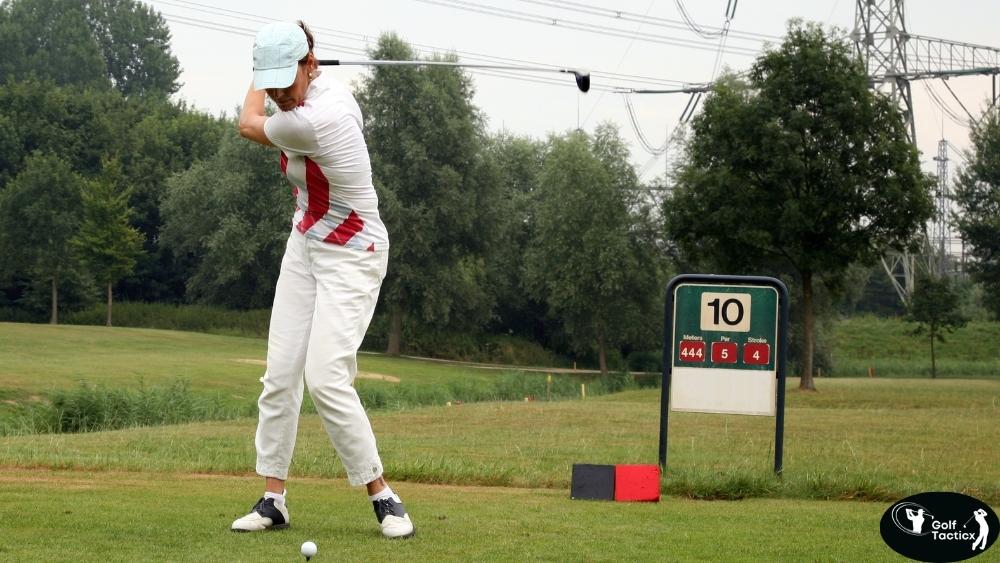In the last post, we explored Techniques for Enhancing Your Game Against Stronger Golf Competitors.
Achieving a single-digit handicap in golf is a goal many players strive for. It’s a sign of consistency, skill, and control over your game. In this post, we’ll break down how to reach a single-digit handicap in golf by focusing on key areas like improving your swing, mastering course management, and developing a strong mental game.
Whether you’re a beginner or looking to take your game to the next level, learning how to reach a single-digit handicap in golf will help you focus on the right areas for improvement. Let’s get started.
What is a Single-Digit Handicap?
A single-digit handicap means your handicap index is 9.9 or lower. This puts you in an elite group of amateur golfers who can consistently shoot in the 70s or low 80s.
Why Does It Matter?
- You’ll play at a competitive level.
- You can compete in high-level amateur events.
- You’ll have more fun and confidence on the course.
The 5 Key Skills You Need
To reach a single-digit handicap, you must master the fundamentals. Here’s what you need to focus on:
| Skill | Why It Matters | How to Improve |
| Driving Accuracy | Keeps you in play and avoids penalties. | Work on hitting fairways with a controlled swing. |
| Iron Play | Helps you hit more greens in regulation. | Focus on consistent ball-striking with proper setup. |
| Short Game | Saves strokes around the green. | Master chipping, pitching, and bunker shots. |
| Putting | Reduces three-putts and improves confidence. | Develop a solid stroke and learn to read greens. |
| Course Management | Helps you avoid unnecessary risks. | Play smart and avoid hero shots. |
Step-by-Step Plan to Lower Your Handicap
Improve Your Driving Accuracy
A wild tee shot can ruin your hole before you even get started. To lower your handicap, accuracy off the tee is key. Here’s what I recommend:
Shorten Your Backswing: A full backswing can lead to inconsistency, especially when you’re trying to control your shots. Try a three-quarter swing for more control. By keeping the swing shorter and more compact, you’ll gain better accuracy, which is essential in lowering your handicap.
Use the Right Tee Height: When you use your driver, the ball should be teed so that half of it is above the clubface. This helps you make clean contact with the ball and keeps your shots straight. Setting up correctly every time will help you avoid those erratic tee shots that can hurt your score.
Find a Go-To Shot: Whether it’s a fade or a draw, develop a reliable shot shape to keep the ball in play. By having a dependable shot shape, you’ll minimize mistakes and be able to avoid hazards more effectively. This is one of the best strategies for how to reach a single-digit handicap in golf.
Master Your Iron Play
To score well, you need to hit greens in regulation. Here’s how to improve your iron play and get closer to lowering your handicap:
Focus on Ball Striking: A solid, repeatable impact with the ball is crucial. Make sure your hands are in the right position at impact to deliver a clean strike every time. Good ball striking is one of the main ways to improve your consistency on the course.
Control Your Distances: Understanding the exact distances you hit your irons is essential. Use a launch monitor or track your shots on the course to understand how far you’re hitting each club. This will help you choose the right club for every situation and hit more greens in regulation.
Pick Smart Targets: Aim for the middle of the green, not the flag. While going for the flag can be tempting, targeting the center of the green gives you a larger margin for error, helping to avoid risky shots that could end up in trouble.
Develop a Killer Short Game
The short game accounts for 60-70% of your shots in a round, making it one of the most important aspects of how to reach a single-digit handicap in golf. Here’s how to sharpen it:
Chipping: Keep your hands ahead of the ball and use a consistent stroke. The key to good chipping is focus and control, which can help you save strokes around the greens.
Pitching: Use the bounce of the club for soft landings, especially when you need the ball to stop quickly. A well-executed pitch shot can set you up for easy putts and reduce the number of mistakes you make.
Bunker Play: When you’re in the sand, keep an open stance and focus on a smooth follow-through. Practice regularly to become comfortable with bunker shots, as mastering this aspect of your game will make a big difference in your scores.
Improve Your Putting
Good putters make everything inside five feet and avoid three-putts, which is crucial for lowering your handicap. Here’s how to improve your putting:
Use a Pendulum Stroke: Keeping your wrists quiet and using a pendulum motion for your putting stroke can help you create more consistency. A smooth, rhythmic stroke leads to better accuracy and control.
Read the Green Properly: Before every putt, walk around the hole to see the break and understand how the ball will move. By reading the green correctly, you’ll have a better idea of how to line up your putts.
Practice Short Putts: Spend about 80% of your practice time on putts inside 10 feet. Making these shorter putts will improve your confidence and reduce the chance of costly three-putts.
Learn Smart Course Management
Sometimes the smartest shot is NOT the aggressive one. Course management is essential when learning how to reach a single-digit handicap in golf.
Play to Your Strengths: If your 7-iron is your best club, use it often. Knowing your strengths will help you make more consistent shots and reduce the chance of making mistakes with less comfortable clubs.
Avoid Trouble Areas: If there’s water, bunkers, or other hazards in play, don’t be afraid to play away from them. Protecting yourself from risky situations will help you avoid big mistakes that can ruin your round.
Think Two Shots Ahead: Always consider the next shot. Position yourself for an easier next shot, whether it’s by leaving yourself a better angle to the green or keeping the ball away from trouble. By thinking ahead, you can reduce your risk and play more strategically.
By focusing on these key areas, you’ll be well on your way to learning how to reach a single-digit handicap in golf. The more you practice these skills, the more consistent and effective your game will become, leading to better scores and a lower handicap.
How to Track Your Progress
One of the best ways to stay on track is to measure your progress. Here’s a simple way:
| Metric | Target |
| Fairways Hit | 50-60% |
| Greens in Regulation | 40-50% |
| Putts per Round | 30 or fewer |
| Up & Down Saves | 50% or higher |
You can use a golf tracking app like Arccos Golf or Shot Scope to track these stats.
Practice Plan for a Single-Digit Handicap
Weekly Schedule
| Day | Focus |
| Monday | Short game (chipping, putting) |
| Tuesday | Iron play (ball striking drills) |
| Wednesday | Driving accuracy (fairway finders) |
| Thursday | Short game (bunker, flop shots) |
| Friday | Full round with course management focus |
| Saturday | Putting (distance control, short putts) |
| Sunday | Rest or light practice |
Conclusion
Reaching a single-digit handicap in golf is a challenging but achievable goal. By focusing on improving your swing mechanics, understanding course management, and staying consistent with your practice, you can make steady progress.
Remember, it’s not just about hitting the perfect shot but maintaining a calm mindset, especially under pressure. Keep track of your progress and stay patient golf is a game of continuous learning. Follow the steps mentioned in “How to Reach a Single-Digit Handicap in Golf,” and you’ll be well on your way to mastering the game.
















Leave a Reply